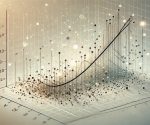Big data predictive analytics is the process of predicting future outcomes using big data sets. It assists the companies to take wise decisions. And it works at data analytics tools and predictive modeling techniques to discover patterns and trends. Advertising agencies are using machine learning in analytics to examine past data and predict future outcomes. Hence, big data predictive analytics helps in the process of solving problems, saving time as well as increasing profits.
Best Data Analytics Tools
They have many tools to pour over their big data. They assist organizations in decision-making, strategy planning, and forecasting. Data analysis in real-time, which is invaluable when circumstances are changing rapidly, is also supported by them.
Hadoop and Spark
Hadoop is one of the most commonly used tools for storing and processing of big data. It slices big files into tiny pieces and distributes those pieces across many computers. It can handle structured and unstructured data with ease.
MapReduce: MapReduce is a parallel processing technique used to process massive amounts of data. Doing this enables businesses to deal with large datasets.
Compared to Hadoop, Spark has faster processing speed. It keeps data in memory, so you don’t read from the disk every time. Spark is helpful in real-time data analytics. Machine learning for big data is also supported, meaning it can train up models quickly.
Tableau and Power BI
Tableau can transform numbers into visuals. It has graphs, charts, and dashboards. Data becomes easy to see for trends and insights with Tableau. It connects with many data sources and refreshes dashboards in real-time. It assists forecasting on big data.
Another great tool; Power BI. It assists users with report generation and sharing. It integrates nicely with Excel, SQL and cloud services Users are also allowed to set alerts for important changes in data.
SAS and R
SAS is a powerful tool to perform statistical analysis. It assists with data mining and report generation. SAS is excellent for predictive analytics type of use cases such as fraud face detection or demand forecasting.
R is a language for statistics and graphs. It has a lot of packages for high-end data analytics. R is open-source and widely used at both schools and businesses. It has a good applicability even to big data sets and also aids in predicting customer behavior.
Python and SQL
Python is simple to learn. There are tons of libraries such as Pandas, NumPy, Scikit-learn, TensorFlow, etc. These can support making use of machine learning in analytics and making models. Python provides a perfect working with big data in a small code of the task.
SQL is the language for data read and write. It can assist in cleaning and processing data prior to analysis. SQL is applied to several big data analytics tools to retrieve the suited data quickly.
Database Tool
These tools combined assist in predictive analytics of big data. Businesses deploy them for quick, intelligent answers.
Big Data Predictive Analytics
You use predictive modeling techniques to guess what might happen. These techniques rely on math and data to form models. The models assist in forecasting future events. Companies rely on these models to predict when people will buy things, what they like and when machines will fail.
Linear Regression
This is a simple way to perform linear regression. It discovers the connection between two things. If sales only increase when the ads increase, linear regression captures that. It connects data points with a straight line. Businesses use it to predict sales, prices, or demand. It is fundamental for a lot of other predictive modeling methods.
Logistic Regression
If you just want to know yes or no, logistic regression helps. For instance, will the customer purchase or not? It gives answers in 0 or 1. It’s what banks rely on to see whether a loan will be repaid. It helps in forecasting customer behavior.
Decision Trees
A decision tree is a diagram-type structure. It questions and decides at every turn. It is human-readable and easy to comprehend. It divides data into smaller parts and makes decisions according to features. These tools can guide predictive analytics use cases such as customer attrition or fraud detection.
Random Forest
A random forest is an ensemble of decision trees. It proves to perform better than a single tree. It compares the solutions of every tree and takes the best one. It’s best for huge nerve nets and giant problems. It is used to predict with big data.
Neural Networks
Neural Networks are intelligent systems inspired by the workings of the human brain. They learn from past data. Machine learning algorithms are good at discovering hidden patterns. The big data machine learning neural networks are used to predict prices, find faces, or translate languages.
Time Series Analysis
Understanding time series analysis (data over time). It observes historical trends to forecast future values. It aids in forecasting sales, stock prices, or website traffic. Companies use it for real-time data analytics and future predictions.
| Tool | Best For | Type |
| Hadoop | Storing and processing big data | Storage |
| Spark | Real-time processing | Processing |
| Tableau | Data visualisation | BI Tool |
| Power BI | Reporting and dashboards | BI Tool |
| SAS | Statistical analysis | Analytics Tool |
| R | Advanced data analytics | Programming |
| Python | Machine learning and modelling | Programming |
| SQL | Data queries | Database Tool |
How Machine Learning Improves Big Data Predictive Analytics?
It is like you give a brain to your data in analytics that uses machine learning. As an example, it has the potential to learn that customers who bought the last pair of shoes will likely buy accessories so it would recommend accessories to them. It reduces errors and enables smarter decisions at a faster rate.
What is Machine Learning?
Machine learning refers to using data to train an algorithm or computer to take decisions. It does not need clear rules. Instead, the computer learns from data and patterns.
There is 3 types of machine learning:
- Supervised learning: The model learns using labels. It knows the difference between right or wrong.
- Unsupervised learning: The model discovers groups in data without labels.
- You could also enhance it with a type of supervised learning known as reinforcement learning.
These are all methods used for prediction using big data analytics to solve various problems.
How does Machine Learning Help?
Using machine learning helps us improve the prediction of customer behaviour. The system knows what the customers are already fancying. It recommends products, times to send emails, and what not to do. Online stores and streaming services do this to provide better options.
Machine learning is also superior for near-real-time data analysis. The model is trained on the data you are fed. It notifies me when there is some error or anything new. It can assist in preventing fraud, repairing machines or sequencing deliveries.
Big data forecasting is faster and more accurate. Machine learning observes more data than a human can. It detects slight differences and reacts quickly. It is used to manage stocks, prices or demand.
Machine learning makes advanced data analytics even smarter. It can act upon images, videos, words, etc. It assists in comprehending feedback, deciphering contracts, or scanning images. This adds a lot of value to big data projects.
Why Machine Learning Matters?
The more time you invest in machine learning, the better results you get. I mean, it improves with more data. This is a great feature for predictive analytics use cases. Businesses see answers before solutions occur. They charge less, take less time and use fewer resources.
Relevance to ACCA syllabus
Big data predictive analytics is interesting in its own right, but it also has strong relevance to ACCA (particularly in SBR and SBL papers). Therefore, ACCA students should know how data analytics assists with strategic decision-making, risk management, and performance monitoring. Knowledge of big data analytics enables future accountants to analyze large data sets and yield actionable business insights guiding ethical and regulatory frameworks.
Big Data Predictive Analytics ACCA Questions
Q1: How does big data predictive analytics relate to financial reporting?
A) Automate ledger entries
B) Make future financial forecasts
C) Reduce audit documentation
D) Replace human judgment
Ans: B) To predict future financial outcomes
Q2: Which A5 paper links most closely to big data when it comes to making strategic decisions?
A) Financial Management
B) Taxation
C) Strategic Business Leader
D) Audit and Assurance
Ans: C) Strategic Business Leader.
Question 3: How could big data predictive analytics be used to facilitate the performance evaluation in ACCA practices?
A) Q by Q revenue comparison only
B) Real-time tracking of KPIs from different data sources
C) All financial models will be replaced
D) By retaining accounting records
Ans: B) By pulling real time KPIs from different sources
Q4: In what way can predictive analytics applied to finance create an ethical dilemma?
A) Increased storage costs
B) Decision-making by means of biased algorithms
C) Manual report entry errors
D) Lack of skilled staff
Ans: B) Biased algorithmic decision making
Q5: The ACCA framework shows that big data is mainly used for risk management.
A) Complete Financial Statements
B) Rendering Historical Data Obsolete
generated risks of business early
D) Avoid budgeting altogether
Ans: C) To predict business risks in advance
Relevance to US CMA Syllabus
The US CMA syllabus is more oriented towards performance management, internal controls and decision analysis. Now predictive analytics big data is a decision making tool for forecasting, budgeting and planning. They will look at using analytics for cost containment, business insight, and risk assessment.
Big Data Predictive Analytics CMA Questions
Q1: How are predictive analytics used in managerial accounting?
A) Posting entries to ledgers
B) Channeling performance and costs forward
C) IPERIA.
D) Preparing tax returns
Q: The answer is B) For measuring future performance and costs
Q2: How can big data predictive analytics assist managers in cost management?
A) When you record journal entries
B) By predicting demand and minimizing costs
C) à travers la sous-traitance du contrôle des coûts
D) By eliminating the budgeting process
Ans: B) Demand forecasting and Cost optimization
Question 3: What types of data are generally employed in predictive analytics in the budgeting process?
A) Only current month’s sales
B) Past, live, and third party data
C) Manual data entries
D) Payroll data only
Ans : B) Historic, live and external data
Q4: In CMA syllabus we have analytical tools such as predictive models. Which part of the CMA syllabus do you think this covers?
A) Section 1 – Financial Planning, Performance And Analytics
B) Episode 2 – Strategic Financial Management
C) Ethics section only
D) Business law section
Ans: A) Part 1 — Financial Planning, Performance, and Analytics
Q5: How can predictive analytics become a part of the performance management process?
A) It not relying on historical achievement only
B) It enables KPI prediction
C) No KPI vor KPIs are good for anything.
D) It records past expenses
Ans: B) It should allow us to estimate future KPIs
Relevance to US CPA syllabus
Data analytics is also included in the US CPA exam under AUD (Audit and Attestation) and BEC (Business Environment and Concepts) sections. CPAs need to know how predictive analytics can help in audit planning, fraud detection, internal controls and business risk assessments.
Big Data Predictive Analytics CPA Questions
Q1: What are the advantages of big data predictive analytics to facilitate auditors?
A) Increasing manual testing
B) Risk forecasting of fraud from historical data
C) When we take either sample sizes approaching infinity or almost perfect contingency tables.
D) By verifying signatures
Q2: Which CPA exam section would you probably find something about big data predictive analytics in?
A) FAR
B) AUD
C) REG
D) None of the above
Ans: B) AUD
Qt3: How does predictive analytics benefit businesses in the following ways?
A) Manual data review
B) Rectifying an historical wrong
C) Decision making based on models
D) Creating physical backups
Ans: C) Competing by means of strategic decisions based on expectations
Q4: One of the key benefits of big data predictive analytics can assist the accounting audits?
A) Better manual records
B) Enhanced sampling
C) Audit procedures appropriate to risk-based focus
D) Fewer control checks
Ans: c) Risk-based audit procedures
Q5: What is the role of big data in audit evidence quality?
A) Data deletion
B) Real-time data analysis
C) Paper audit trail
D) Use of handwritten records
Ans: B) ) Реальный анализ данных системы
Relevance to CFA Syllabus
Big data predictive analytics appears in the CFA exam under Quantitative Methods, Financial Reporting and Analysis and Portfolio Management. By analyzing enormous datasets for predictive insights, it aids CFA candidates in understanding trends, evaluating risk, and making informed investment decisions.
Big Data Predictive Analytics CFA Questions
Q1: In regards to investment analysis, how does predictive analytics benefit a CFA charterholder?
A) By storing customer info
B) By predicting stock prices and market trends
By preparing financial statementsC)
D) Portfolio report audit
Ans: B) Predict stock prices and market trends
Q2. Which topic from CFA focuses the use of big data for forecasting models?
A) Corporate Finance
B) Ethics
C) Quantitative Methods
D) Economics
Ans: C) Quantitative Methods
Q3: Predictive analytics aids portfolio management in the following ways:
A) Randomly guessing multiple future dividends
B) A better asset allocation strategy
C) Ignoring past returns
D) Removing financial ratios
Ans: B) Improving asset allocation strategies
Q4: What is the best characterization of the value of predictive analytics in equity analysis?
A) It assists in writing analyst reports
B) It expects future patterns from previous stock behaviours based on data
C) It stores reports safely
D) It automatically stops losses
Ans: B) It predicts future stock movement based on data trends
Q5: How does big data predictive analytics contribute to risk management?
A) Avoiding market research
Trend analysis: identify future risks
C) Using outdated data only
D) Relying solely on the company’s history
Ans: B) Trend analysis to identify future risks


